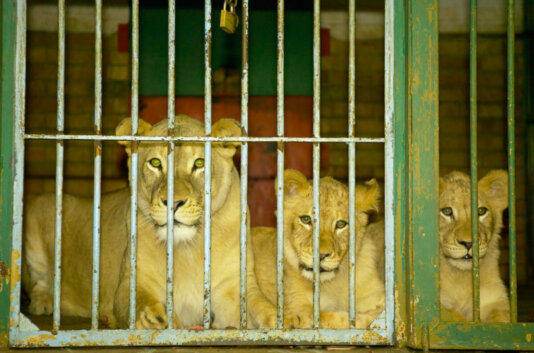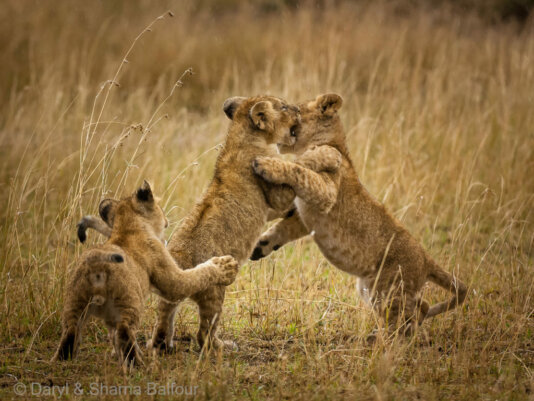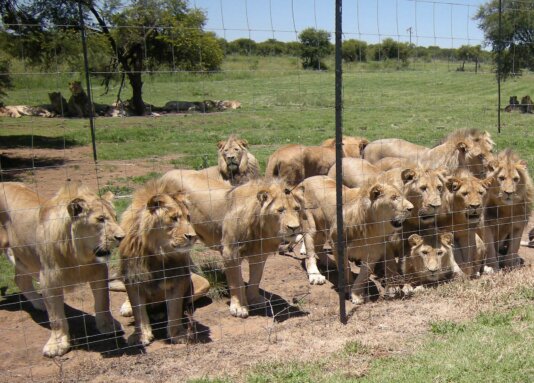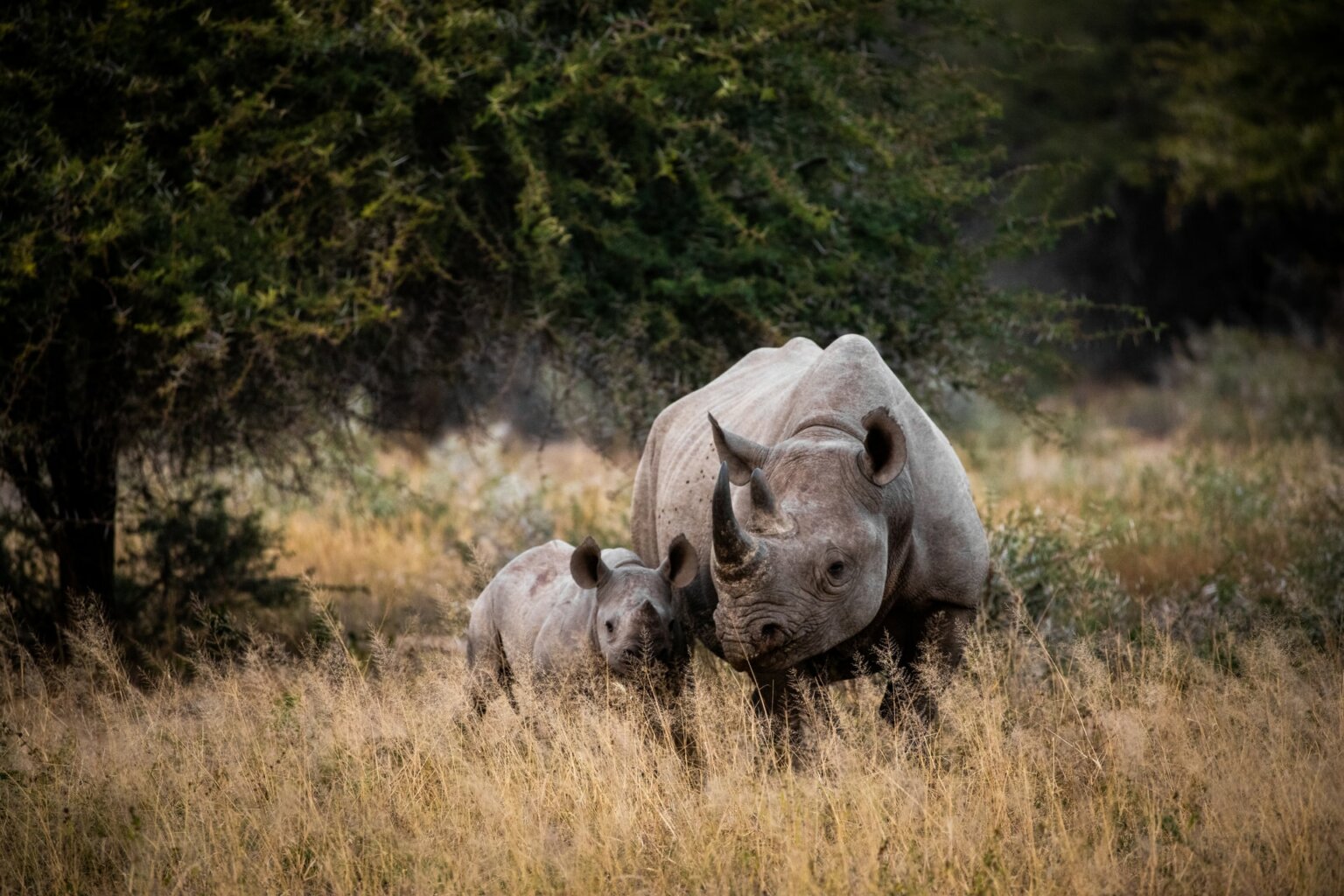- About
- Topics
- Picks
- Audio
- Story
- In-Depth
- Opinion
- News
- Donate
-
Signup for our newsletterOur Editors' Best Picks.Send
Read, Debate: Engage.
| August 10, 2022 | |
|---|---|
| topic: | Hunting & Poaching |
| tags: | #conservation, #South Africa, #illegal lion trade, #poaching, #Blood lion, #tourism industry, #trophy hunting |
| located: | South Africa |
| by: | Frank Odenthal |
In 2015, South African non-governmental organisation Blood Lions launched a campaign - and a movie - to raise awareness and to protect lions. FairPlanet met with Dr. Louise de Waal, the campaign‘s manager.
FairPlanet: What came first - the movie or the campaign?
The movie documentary came first. It was Pippa Hankinson‘s baby - she had the idea. She came from the tourism side and asked what was happening in terms of tourism with cub petting, with walking with lions and also with canned hunting. She joined forces with Ian Michler, who had been researching the industry for a number of years. The film was then launched in July 2015 and that‘s when the campaign was started as well.
What is the problem with the captive breeding of predators?
There is no easy straightforward answer to give. First of all, it‘s an unethical industry, farming our iconic wildlife species like lions for commercial gain, so every stage of their lives is commodified. Early on, cubs are taken away from their mothers. The mothers then go back into heat much sooner, and have up to four or five times more litters than in the wild. The cubs can then be sold off, for which international volunteers pay to bottle feed these “orphaned” lion cubs. They go into the cub-petting industry where they are introduced to petting enclosures for up to eight hours per day. When they get too dangerous and boisterous, some of them will go into the ‘Walking with Lions’ industry, although that hasn‘t taken off in as big numbers as the cub petting.
That‘s all done for the human gratification of getting that perfect selfie with a lion cub. Afterwards, the cubs are often sent back to breeders, or back to a farm where they are held until they are old enough to be sold as a lion that will be shot in a paid canned-hunt by international trophy hunters. Then, in about 2009, the lion bones industry started to take off, for which their skeletons are also sold off to southeast Asia for “traditional medicine” which is not scientifically proven to have any benefits. They are also traded alive overseas to other breeders for commercial activities or for personal exhibitions. Everything is commodified. And that is, in our view, a very unethical treatment of one of our most iconic species.
What do these regulations in South Africa look like?
There is some national legislation, and it is then being implemented on a provincial level. We have nine provinces, and each province interprets and implements that legislation in slightly different ways. So there is no consistency across the country in terms of regulations. To give you an example: In the North West it is not permitted to euthanise these animals, so the provincial authorities don‘t issue euthanisation permits. But then the Free State does. So what happens is that farmers in the North West will then transport their lions across the provincial border, and another farmer in the Free State will then euthanise them.
There are all these little legal loopholes within that regulatory system; as a result that industry can get away with a lot of maybe not completely legal activities.
How many lions are left in South Africa and in Africa as a whole? Are they threatened by extinction?
In South Africa we have lions in extensive wilderness areas, like the Kruger National Park and the Kgalagadi National Park, as well as many lions in smaller fenced private reserves, which account for about 3,000 lions in the wild. The population in South Africa is pretty stable because it is so highly protected. In addition, we have about 8,000 to 10,000 lions in captivity. Across Africa it‘s a different story. Across Africa we have lost, if I‘m not mistaken, about 43 percent of lions in the last 20 years. When you talk to some lion ecologists, they say there may be as few as 15,000 lions left across Africa. Others say it‘s 20,000 to 22,000. Nevertheless, the lion population across Africa is hugely in decline, very much as a result of habitat destruction, habitat fragmentation, a lack of prey species, and human-wildlife conflicts like poaching and trophy hunting.
At FairPlanet, we‘ve been dealing with wildlife protection and the poaching issue in great detail. (See our developing story on Saving the Rhino). In the case of the rhino, another iconic species in South Africa, there are commercial breeders claiming that if you turn a wild animal into a valuable asset, then it would be protected far better than when you stop the commercial use of wild animals. Is that comparable to the captive lions breeding market?
There is a lot of debate around that issue as well, since you cannot satisfy the demand for lion bones, the same way you cannot satisfy the demand for rhino horns, because the market in Southeast Asia is just so enormous. If you look at the poaching of rhinos in the wild, there hasn‘t been any protection as a result of the breeding in captivity because we have been losing rhinos in great numbers over the last decade, and we see similar patterns with the poaching of wild lions for their body parts.
But correlation is not always causation. Breeders claim that they could easily release/reintroduce animals bred in captivity into the wild - but it’s not that simple, it doesn‘t work that way. Suddenly you create a commodity that has a value. We now see many lions in the wild being poached for their claws and their teeth because they now have a price, and because they are small and easy to smuggle out of the country because.
Do those similar patterns that you mentioned include the smuggling and trading routes and the mafia-like structures of the groups involved?
Yes. We know that the same wildlife syndicates that are involved in the illegal rhino-horn poaching trade are involved in the lion poaching and body-part trade, there's definitely links between the two. And we do believe that this industry is actually having a negative impact on the wildlife population, and especially on the smaller lion populations.
Let’s talk about the Blood Lions campaign. What is included in that campaign?
The campaign has three elements. One part that is pretty much the public-facing online part of the campaign: it focusses on education and raising awareness through the Blood Lions and the Youth For Lions platforms. Part of it is translating the key messages from the scientific papers that we‘ve published into language that the public can understand.
The second element is that we do quite a lot of important research, partly because the government will not accept any information that has not been peer-reviewed and published in academic journals. I have an academic background, so when I joined the Blood Lions team, that was something that we started focussing on. It backs-up our whole campaign with proper scientific evidence that we can then also use for lobbying, which is the third element of the Blood Lions campaign, and which will hopefully get us closer to our overall goal of putting an end to the commercial breeding and keeping of lions in South Africa.
In 2021, you were quite successful when South Africa‘s minister of environmental affairs Barbara Creecy announced that she would stop captive breeding of lions. So, is captive breeding now actually stopped?
No. It‘s never that straightforward, you know. The minister had appointed a high-level panel of experts at the end of 2019. One of the recommendations that came out of that process was to actually stop the domestication of our iconic lion species, and to close the industry, which the minister vowed to do.
However, so far nothing has changed. In the meantime, the minister has instructed the department to write a White Paper as a document that sets the tone for future conservation policy in South Africa. The only other announcement the minister made so far is her intent to set up a lion’s experts panel to support an exit strategy, and that she will start with a voluntary exit plan.
So little has changed in terms of animal welfare?
That‘s right. In fact, animal welfare in South Africa is a big mess. First of all, it was moved to different departments. Animal welfare now falls under the mandate of agriculture – which I think is the wrong place, because its mandate is food production, whereas it used to be in the Department of Justice, but for some reason it was moved. On the other hand, wild animals fall under the mandate of the Department of Environment. So we‘ve ended up in a situation where different departments are pointing fingers at each other when it comes to certain responsibilities.
Are the local communities involved in your campaign?
The high-level panel had community leaders on board as well, so there were representatives of chiefs and community leaders, who voted to close that industry as well. In fact it was a majority vote, not a unanimous vote because the industry was also represented on the panel, and they obviously didn‘t vote for the recommendation to close the industry.
Is it possible to introduce lions that grew up in captivity into the wilderness?
We‘ve had a lot of discussions with lion ecologists about that. First of all, a lot of these lions are inbred, and their genetics are compromised. So a lot of the lion ecologists will say they don‘t want these compromised genes to get into the wild. Secondly, those animals have been captive bred, they have never hunted for themselves and are physically not very fit, so it would be very, very difficult for them to survive in the wild where they have to hunt, where they have to deal with other predators, where they suddenly have to live in a certain social groupings - because even that doesn‘t exist in captivity.
Very often you will just see lions of the same age being kept in enclosures where a real diverse pride in terms of age and gender doesn‘t exist. And on top of that we then start introducing habituated lions into the wild that can actually create more human-wildlife conflict because they have lost that natural fear for humans. And certainly, in South Africa we just do not have those safe habitats to re-introduce those animals. With lions, it‘s not a lack of breeding success - lions breed very well in the wild - it's the safe habitat that is the problem.
Do you cooperate with organisations in other countries in order to push for better legislation?
It‘s extremely difficult to get politicians on board here in South Africa in order to end the captive breeding of lions. So we decided to really focus on South Africa and get things done here before we try to achieve similar things abroad. Fortunately, in other southern African countries, captive breeding is still in its infancy. So we want to make sure that we can set an example here in South Africa.
What‘s the funding look like at Blood Lions, and how much staff do you have for your campaign?
We have two main funders, the Marchig Animal Welfare Trust and the World Animal Protection. And we have a small part-time digital marketing team. And we have a small team of myself and Cath who run the rest of the campaign, and then the directors who work pro bono.
Dr. Louise de Waal has an academic and research background in environmental management. Louise spearheaded the #HandsOffOurWildlife campaign in response to the many unethical and often cruel captive wildlife encounters on offer in our South African tourism space and also started to work with the Blood Lions team. Recently, Louise became instrumental in the establishment of the coalition “To Stop the Captive Breeding and Keeping of Lions and other Big Cats for Commercial Purposes.”
Photo by Diego Morales



By copying the embed code below, you agree to adhere to our republishing guidelines.
